
summer Edition
New Title
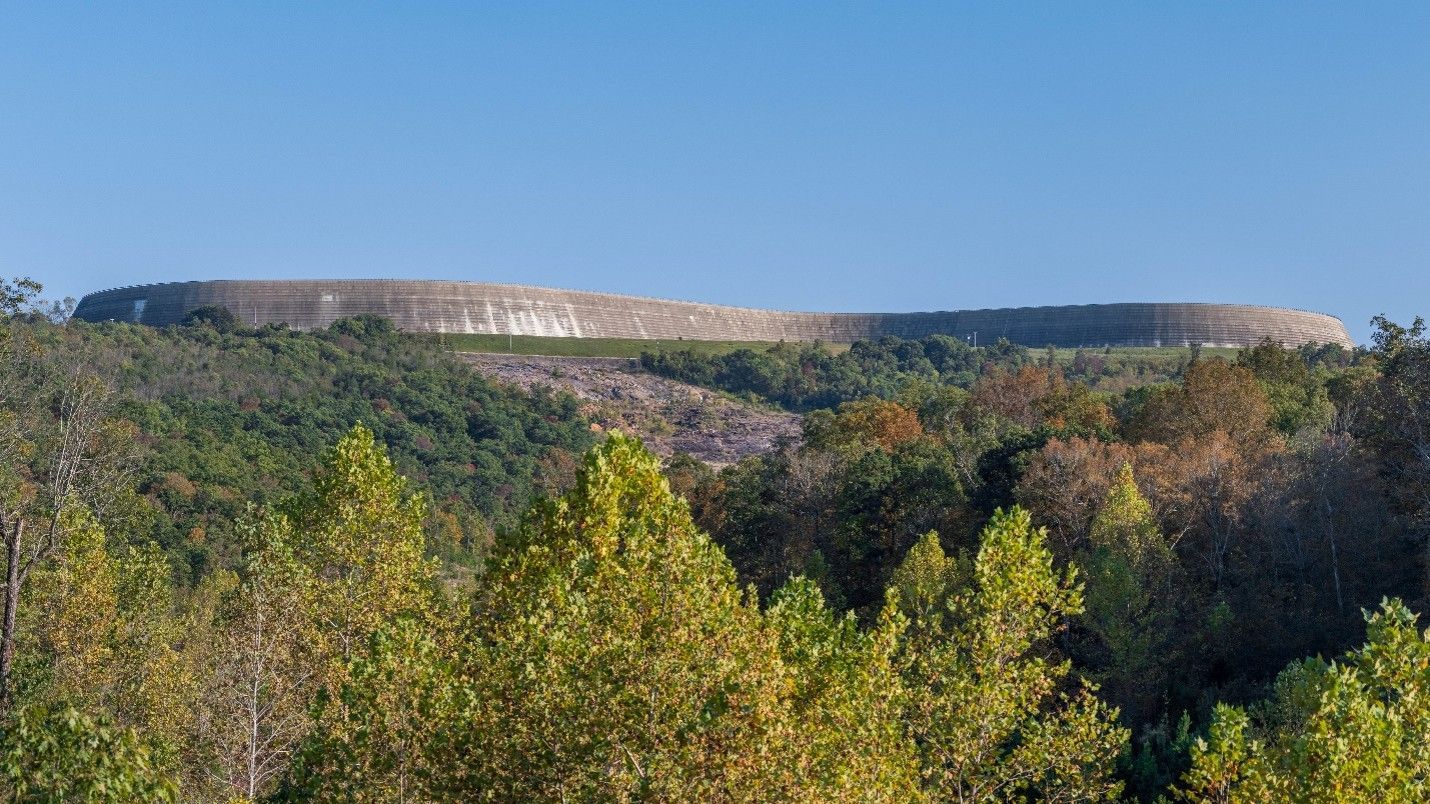
Learn about free flowing streams from Garrett Frandson
An interrupted Continuum
By Garrett Frandson, Stream Team Volunteer Water Quality Monitoring Program Coordinator

Featured above is the dam surrounding the upper Taum Sauk reservoir, a very interesting system of dams that we may explore in a later article!
Relatively few stream systems flow freely without dams somewhere on them. There are over 5,300 dams over 10 feet tall in Missouri alone, and in the United States, nearly 30% of all stream mileage is affected by dams. People build dams for various purposes including power generation, flood control, drinking water supply, navigation, and recreation—these can be very helpful to us! They also, however, come with impacts to streams and their ecologies, but it’s complicated!
Not all streams are the same, and a major driver of difference is their size: are you in the headwaters? At the mouth of a major river? On an intermediately sized tributary? An influential paper by Robin Vannote discussing his “river continuum” concept (RCC) provided an early understanding of how water, carbon, nutrients, organisms, and more behave as you go from tiny streams to mighty rivers. Soon after, another paper was published discussing a natural follow-up question: “what if you dammed the stream?”
This question is discussed by Ward and Stanford as part of their “serial discontinuity” concept. They considered the concepts laid out with the RCC and then thought about how damming a stream at different locations, from headwaters to much farther downstream, might affect the a given aspect of stream ecologies in different ways. Let’s consider stream discharge: in small streams, discharge is often pretty stable as many of these streams are fed by springs, tapping into the stability of groundwater. Large rivers tend not to change quickly because they have so many tributaries balancing each other out. If you place a dam large or small streams and are regularly discharging some water (we’re not completely cutting off stream flow!), changes in discharge just downstream of the dam aren’t all that affected! It’s in fact the middle-sized streams, which are not so influenced by springs or by tons of tributaries, that are typically most variable in flow, so placing a dam on them creates the biggest change to flow by stabilizing otherwise variable discharge!
Both papers helped reshape our views and understanding of how stream systems work. If you’re up to some reading, they might help you gain a whole new perspective on these great environments, how variable they can be, and what happens when we make changes to them. Streams are complicated, and that’s one of their best characteristics!

Figure 1 is a chart from a serial discontinuity paper outlining some predictions on how aspects of streams would respond to dams based on stream size.
Our Team Welcomes Lily Smith
meet the newest member of our team
A Foreword by Jeff Cantrell, Volunteer Engagement Specialist
We are excited to welcome our newest team member Lily Smith! Lily will be serving as our Volunteer Engagement Assistant for Southwest and Ozark Regions. Lily will be serving the volunteers in her regions by helping with customer service, assisting with in-person activities, and supplying volunteers with what they need to do the important work of conserving Missouri's waterways. Lily is excited to be working with Stream Team to help Teams in the southern half of the state!
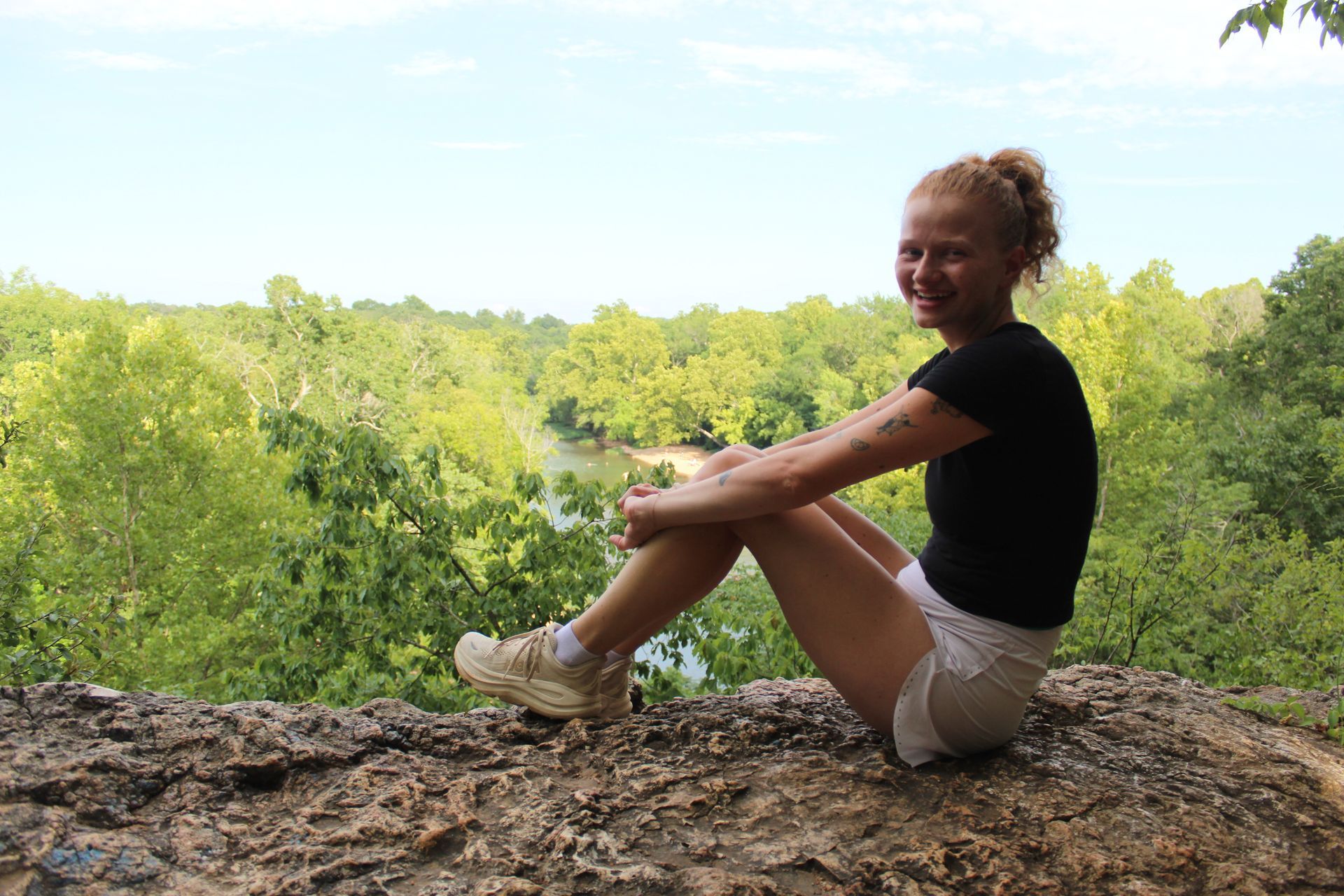
Lily Smith on a cliff-side glade above a stream.
Meet Lily Smith, Volunteer Engagement Assistant
Hi there! My name is Lily Smith, and I am a 24-year-old Environmental Science major at Missouri Southern State University in Joplin, Missouri. I was born and raised in Southwest Missouri, and I've always felt a strong connection to nature; whether it was exploring creeks, walking wooded trails, or simply watching the seasons change. That lifelong love for nature is what led me to study environmental science.
Before going back to school, I worked for several years as a professional nanny, and that experience really deepened my passion for environmental education. Teaching children about the planet, why it matters, how it works, and how we can care for it, sparked a fire in me that hasn't gone out. It showed me how powerful small moments of curiosity and learning can be.
I'm especially passionate about helping people understand how everyday choices impact the environment, and I believe real change starts within our local communities. I'm incredibly thankful for the opportunity to serve as a Volunteer Engagement Assistant because it will allow me to connect with my local community, expand my outreach experience, and grow in a field that I care deeply about.
My long-term goal is to work in environmental policy, where I'm hoping to help shape large-scale solutions that promote sustainability, protect natural resources, and create a healthier planet for future generations.
- Lily Smith
Phone: 417-629-3434
Email: Lily.Smith@mdc.mo.gov
Read the latest Fact Sheet
#39 TICK advisory
Coming soon!
Learn about unknown containers in our latest Monitoring Minute
Encountering the unknown
By Randy Sarver, Stream Team Volunteer Water Quality Monitoring Program Coordinator

The picture above is of a Stream Team cleaning up their adopted site. Families and children help with Stream Team cleanups, so it is important to make sure we observe all safety protocols.
Occasionally a stream team will find a barrel or other container that holds an unknown material while working at their adopted stream or during a clean-up. While the first reaction may be to get that container pulled out of the stream, what if the material inside is hazardous? If the container is obviously open and been under water, then it is likely not a problem – probably just filled with mud or creek water. But what if the container is closed and might contain liquids or solids? Do not put yourself at risk! The container needs proper dispose.
You can help by:
- Taking some photos and making observations.
- Documenting any labels/markings that you see since they will provide some clues.
- Taking GPS readings or mark the location on a map.
- Flagging the location on nearby trees if possible.
- Noting whether there are any signs of leakage.
- Recording what material the container made of – metal or plastic.
Above all, do not move the container. A container that has been in a stream for a long time may not be stable. Moving it without the proper tools and precautions could make matters worse, endangering you and the environment. The best thing to do is call the Department of Natural Resources 24-hour Environmental Emergency Hotline at (573) 634-2436 and report the incident. Trained emergency responders will take your information and investigate the report. The Environmental Emergency Response (EER) Team has the tools to sample and characterize the contents of an unknown container, overpack it for safe transport, and develop a disposal plan if it does contain a hazardous waste.
Other unusual observations that might warrant a call to the EER Hotline include fish kills, strange colored water (a red or green color could be simply a dye trace), foul odors that could indicate a sewage line break or release from a concentrated animal feeding operation (CAFO), or even clear water gushing from broken pipes or manholes.
When in doubt, stay safe and call the EER Hotline!
Catch up with teams around the state with the Riffle Review
Riffle Review - 7030 Teams strong
A quarterly glimpse of Stream Team activities - in the last quarter, Missouri Stream Team volunteers reported:
- 245 Total activities
- 2,584 Total participants
- 10,774 Hours
- 108 Tons of trash collected
- 80 Water quality monitoring trips
- 388 Trees planted
Team Snapshots
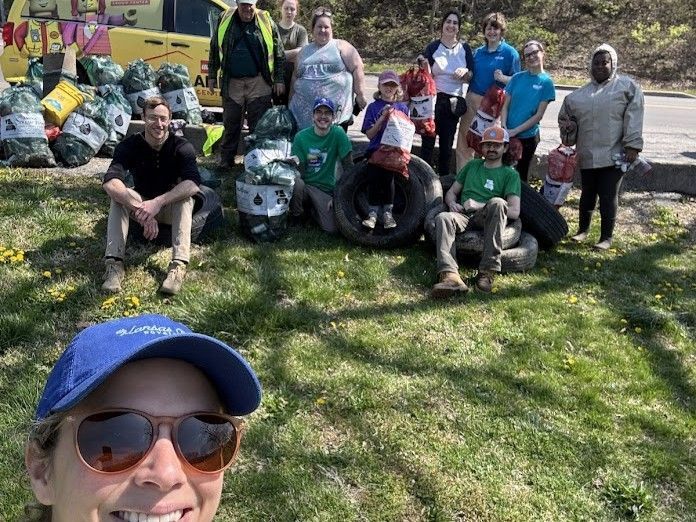
SeaLife KC – ST#6469
SeaLife Aquarium KC continues to build their reputation as an active Team in the Kansas City area. They had several successful cleanups this spring in the Blue River Watershed and have already reported 45 hours this past quarter of volunteer hours for our Missouri rivers and streams.
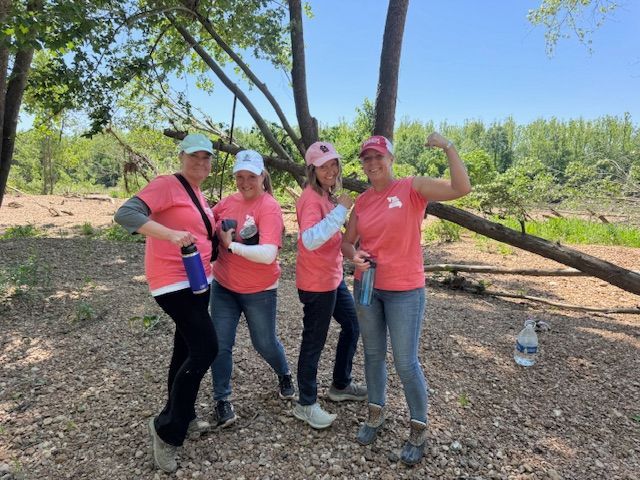
The Shaw Nature Reserve Cleanup - Southern Glazer's Wine & Spirits, Pulmonary Midwest Specialty Care with the Mighty ST#211
Two separate groups worked at Shaw Nature Reserve this past season to remove over 4,000 pounds of trash, a fishing boat, 2 refrigerators, a washer, several tires, and a large picnic table with the guidance of super volunteer, Bernie Arnold of The Mighty Stream Team#211.
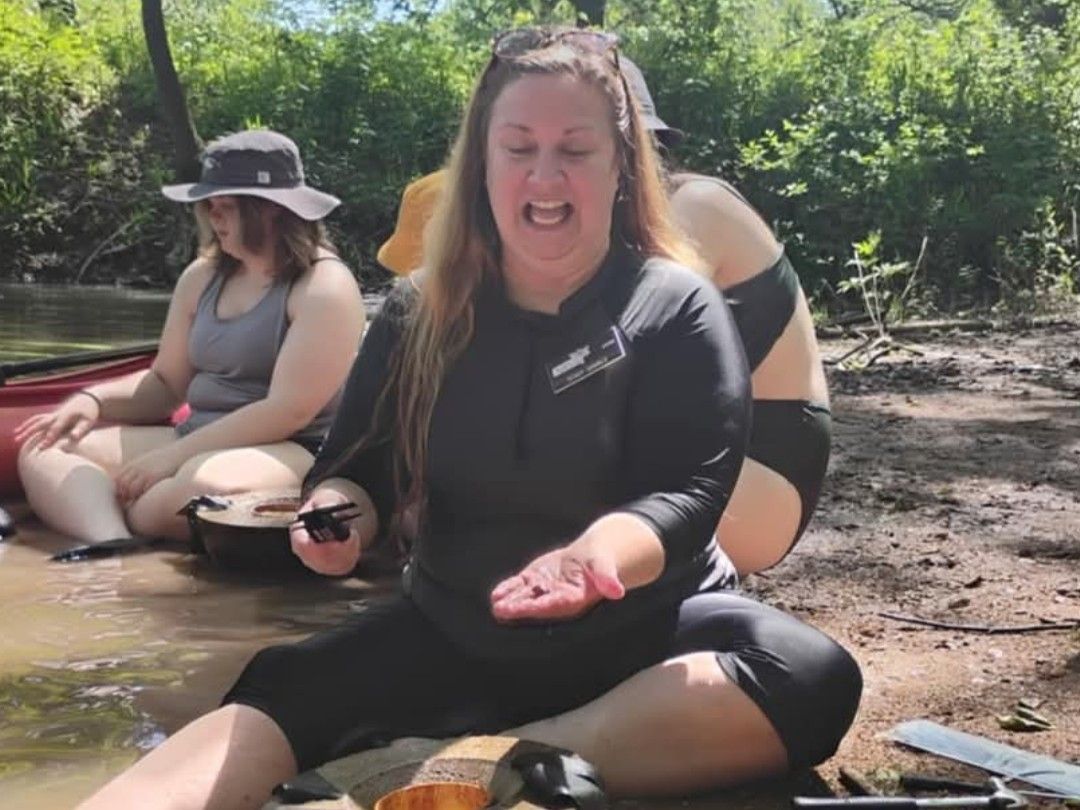
Mussel Monitor Stream Team – ST#6613
Missouri Stream Team #6613 was “wide-reaching” this season for stream-related conservation. There is a saying, “A good tide raises many ships”.
Stacy G. is the lead for the Mussel Monitor #6613 Team, and she is elevating the tide of important conservation projects. Stacy has been proactive with establishing species of concern mussel study sites, collecting data, and providing protective housing (silos) for monitoring.
Whether in-person (in the creek), classroom presentations, or social media outreach, the team has been building a tide for conservation. Her outreach to lay down a foundation for community and increased understanding for the freshwater local ecosystems and the mussel’s life history is much appreciated.
The 100 Club
A highlight of Teams that have contributed more than 100 hours in the last quarter -
| Team Number | Team Name | Hours |
|---|---|---|
| 1995 | De Soto Car Shop | 3830 |
| 5 | Open Space STL | 1008 |
| 1636 | City of St. Peters | 582 |
| 5254 | Fulton Stream Team | 453 |
| 1028 | Current River Rascals | 312 |
| 3348 | City of Excelsior Springs | 302 |
| 4618 | Lexington Middle School | 301 |
| 6234 | Maybery Park Stream Team | 286 |
| 4617 | Two Rivers | 263 |
| 728 | Stream Teams United | 250 |
| 6096 | Beyond Housing | 223 |
| 3206 | MDC Garbage Guerrillas | 150 |
| 7012 | City of Nixa | 150 |
| 4590 | JD's Stream Team | 136 |
| 4510 | Mill Creek Watershed Coalition | 128 |
| 2667 | City of O'Fallon | 120 |
| 4260 | City of St. Joe Water Protection | 106 |
| 4922 | The Tireless Cutters | 105 |
| 5390 | KC Water Warriors | 100 |
National Rivers Month
National Rivers Month
statewide totals - 77,557 Views, 1,025 interactions
Thank you to everyone who participated in our new National Rivers Month Challenge! We challenged you to get outside and explore your local waterways during the month of June.
From June 1st to the 30th, our challenge had a total of 77,557 views, with 1,025 of you interacting and engaging with our posts, with your own stories of how you connect to Missouri's rivers and streams.
Save the date for next June, when we hope to expand the challenge in our 2nd year!
Check out our facebook, where the challenge happened, below -
Get Excited about Activity Prizes
QuarterLY Activity Prize Drawing

Quarter Prize
Spypoint, Cellular Trail Camera, Twin Pack
Quarter Prize
Hydramotion 2.0 Everythingproof, Wireless Speaker
Quarter Prize
Static V, Lightweight Sleeping Pad
Quarter Youth Prize
Magellan, 3-person Tellico Tent
Quarter Prizes:
- Spypoint, Cellular Trail Camera, Twin Pack
- Hydramotion 2.0 Everythingproof, Wireless Speaker
- Static V, Lightweight Sleeping Pad
Quarter Youth Prize:
- Magellan, 3-person Tellico Tent
Fill out an Activity Report for your past or upcoming events, and you could win a prize next quarter!
If you ordered supplies in advance, please don’t forget to report your accomplishments after your event. Missouri Stream Team relies on your reporting to continue to get funding!
Read the Latest Coalition Corner
Coalition corner

How to Advocate Now - and a look at state legislative session 2025 results
By Mary Culler, Executive Director of Stream Teams United
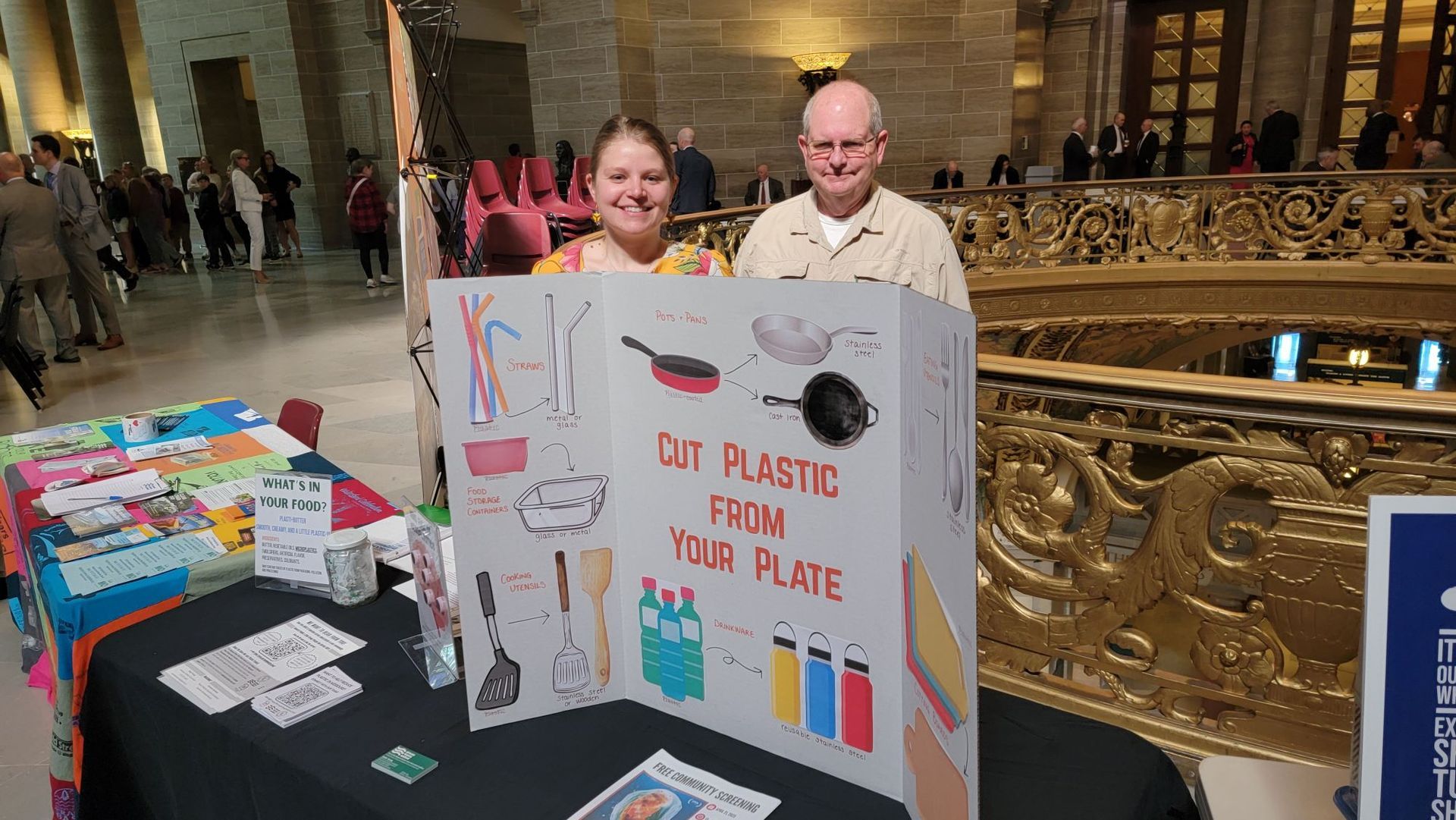
Stream Teams United President, Bill McIlwee, and Stream Teams United Advocacy Outreach Coordinator, Emily Young, help raise awareness about plastic pollution during the 2025 Great Rivers State Day at the Missouri State Capitol.
As a statewide coalition of Missouri Stream Team Associations, a large part of the mission of Stream Teams United is to provide leadership for water advocacy in the state of Missouri. We do this by tracking proposed legislation, public comment periods, and issues of concern, and then communicate through our networks to provide Missouri Stream Teams and the general public with information and tools to help them speak up for the protection of Missouri’s water resources. We join together with the vast conservation community in Missouri to show up to advocate: at the Capitol, at public meetings, and through communication with Missouri’s decision makers.
During the 2025 Missouri state legislature regular session, over 2,600 bills and resolutions were filed by state legislators. Of these bills and resolutions, only 70 of these were “truly agreed to and finally passed” by the state legislature. Of these 70 bills, 16 were appropriations bills authorizing funding for the state budget, and the other 54 bills and resolutions were related to other topics. You can see the list of Truly Agreed to and Finally Passed bills here on the senate website. Stream Teams United tracked 260 bills and resolutions this session, which included bills related to the environment or were bills of interest to the environmental community. Of those 54 non-appropriation bills and resolutions that passed, two bills of interest provide for positive protections of Missouri’s watersheds and water resources. Senate Bill 105 enacts a ban on the sale of several invasive plant species, and Senate Bill 82 creates a permit system for review of proposed water exports from the state of Missouri. Prior to Senate Bill 82, there did not exist a process for review and approval (or disapproval) for export of water from our state, so there was no way to limit water exports from Missouri.
Stream Teams United staff and Stream Team volunteers took to the halls of the Missouri State Capitol several times this spring, to help raise awareness with legislators about issues affecting Missouri’s waterways and environment. We were honored to be recognized on the House Floor during the Conservation Federation of Missouri’s Conservation Day at the Capitol, and received recognition on behalf of all Missouri Stream Teams. Representative Colin Wellenkamp of St. Charles, who also serves as the Director of the Mississippi River Cities and Towns Initiative, publicly thanked Missouri Stream Teams for the work they do for conservation of Missouri’s waters, and noted that healthy rivers are critical to our state’s tourism and outdoor recreation industries. Later in April, we hosted our fifth annual “Great Rivers State Day” at the Capitol, and provided an opportunity for Missouri Stream Teams to meet with their legislators to convey the importance of water protections in Missouri. We also thanked several representatives and senators who are taking positive actions for water protections in Missouri.
Advocacy only works well when there are many voices being heard. We encourage all Missouri Stream Teams to learn more about ways to advocate for Missouri’s resources. For information on ways to advocate,
visit the Advocate Now tab of the Stream Teams United webpage. If you are not yet receiving weekly advocacy and water news updates from Stream Teams United, sign up for our weekly newsletter at streamteamsunited.org or follow us on Facebook, Instagram, and Twitter @mostreamteam. Together, we will continue to build the community of water advocates in Missouri.
